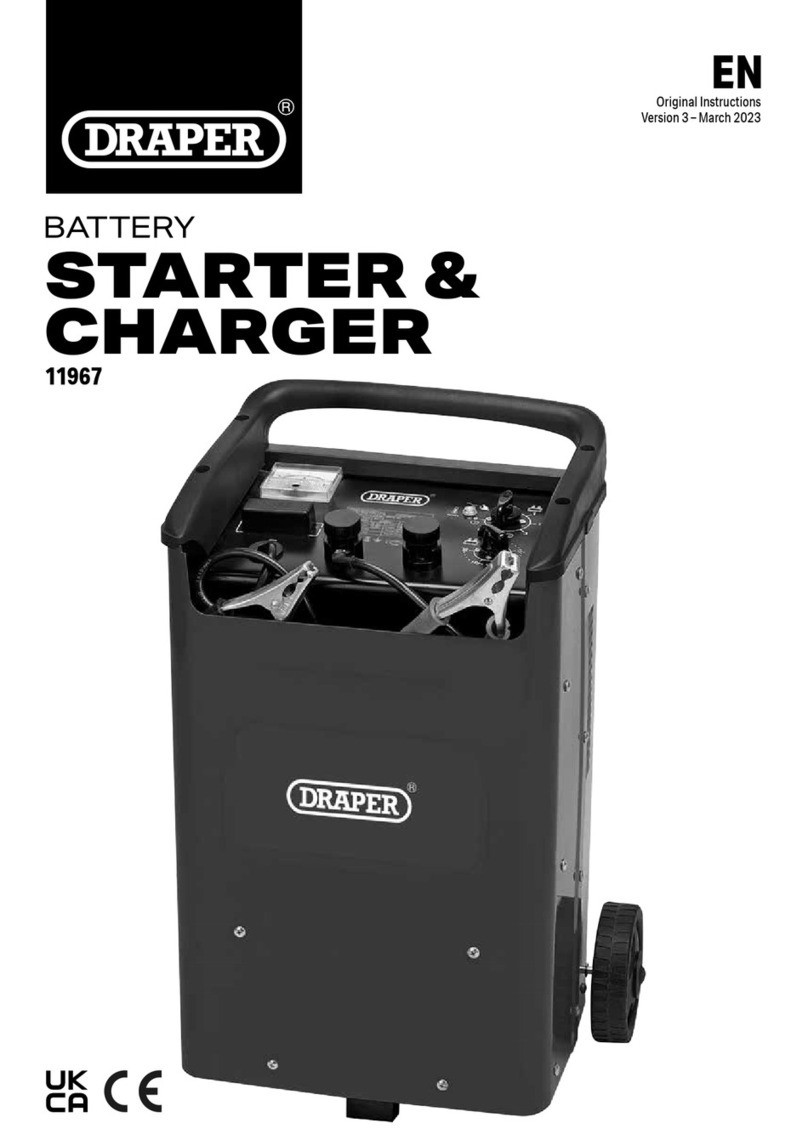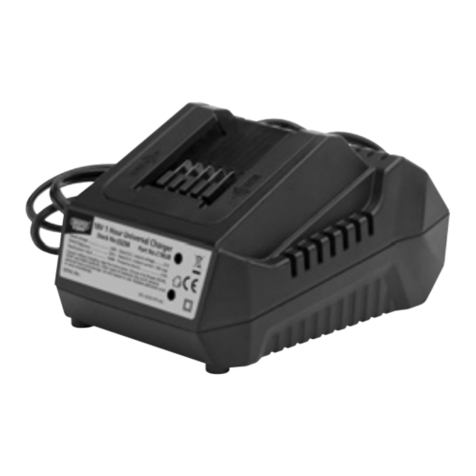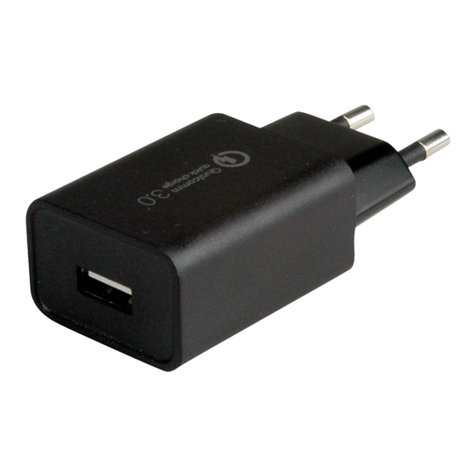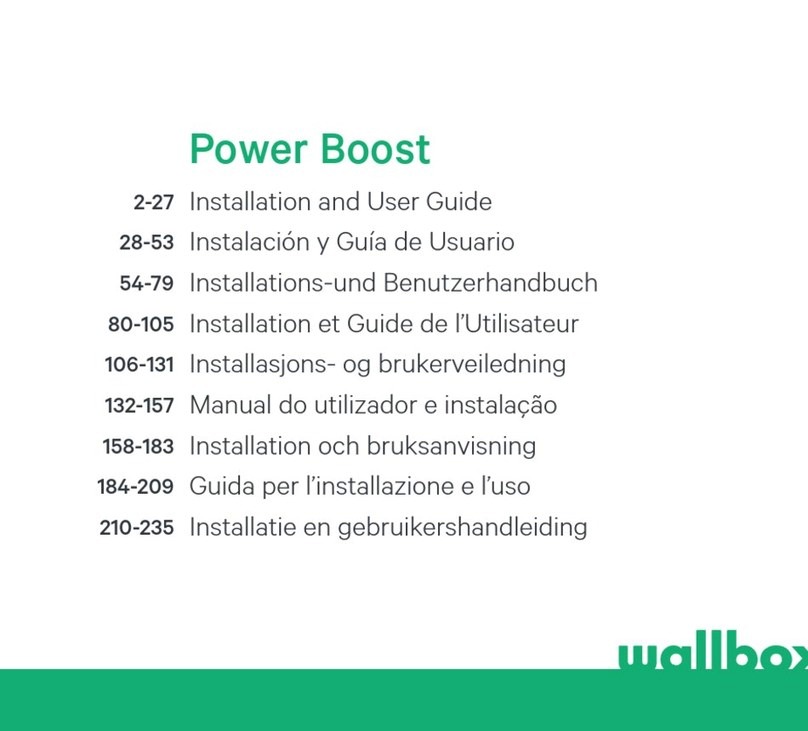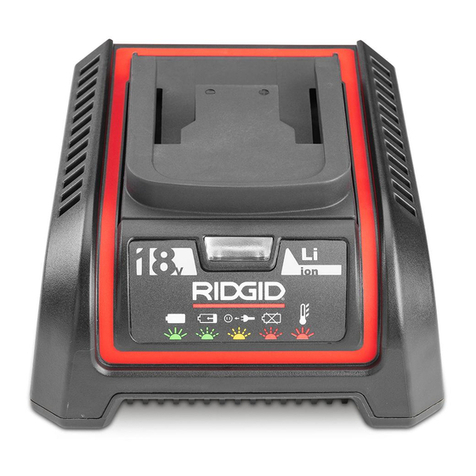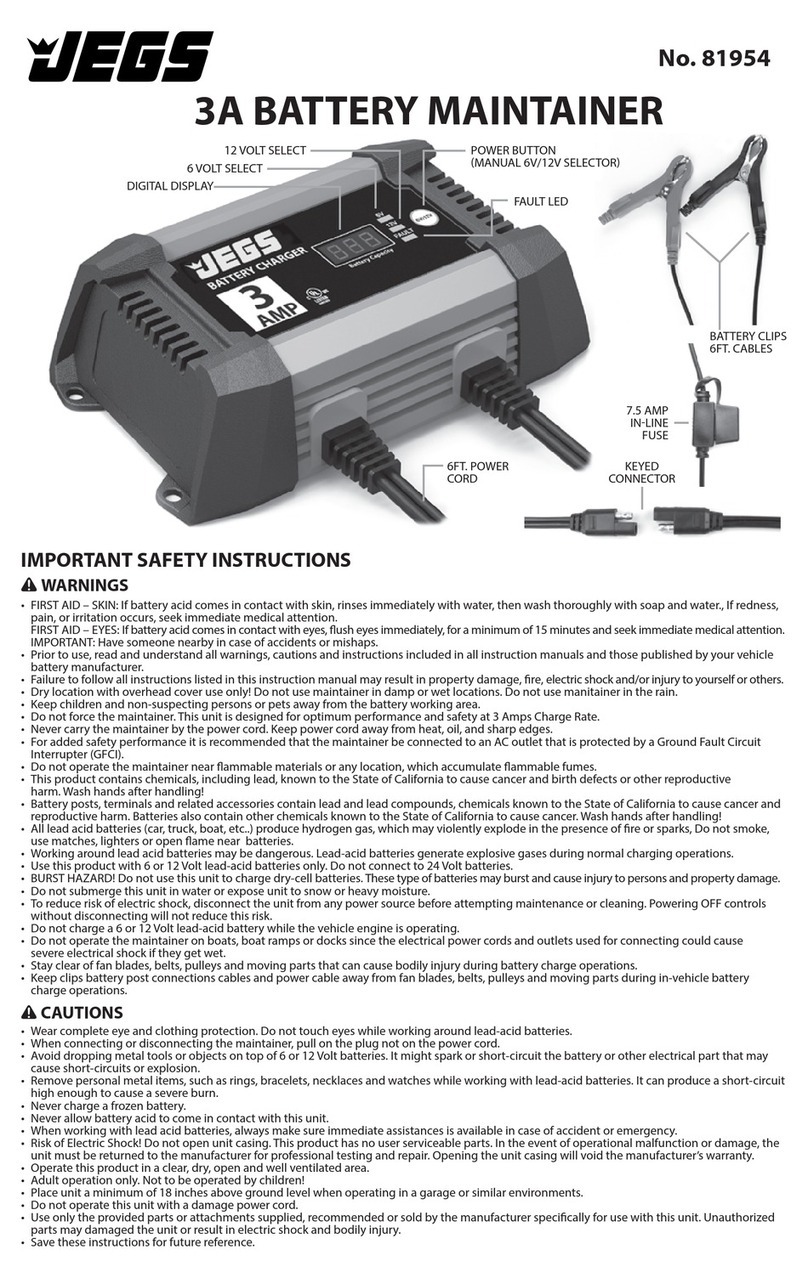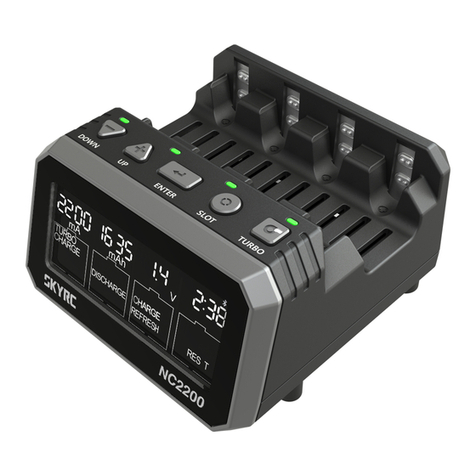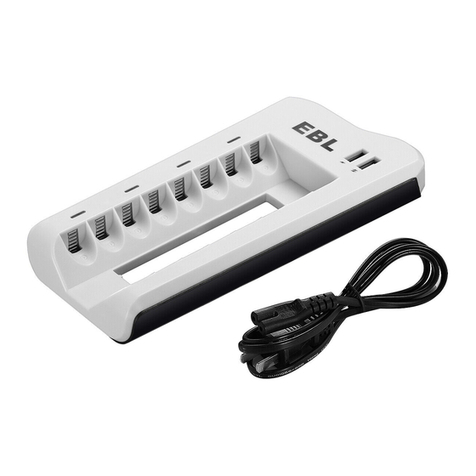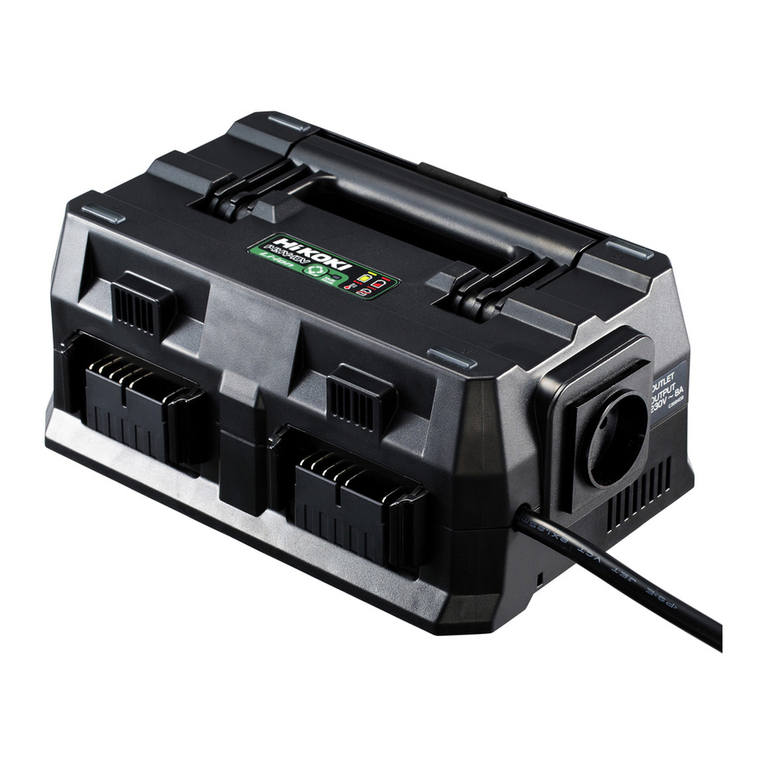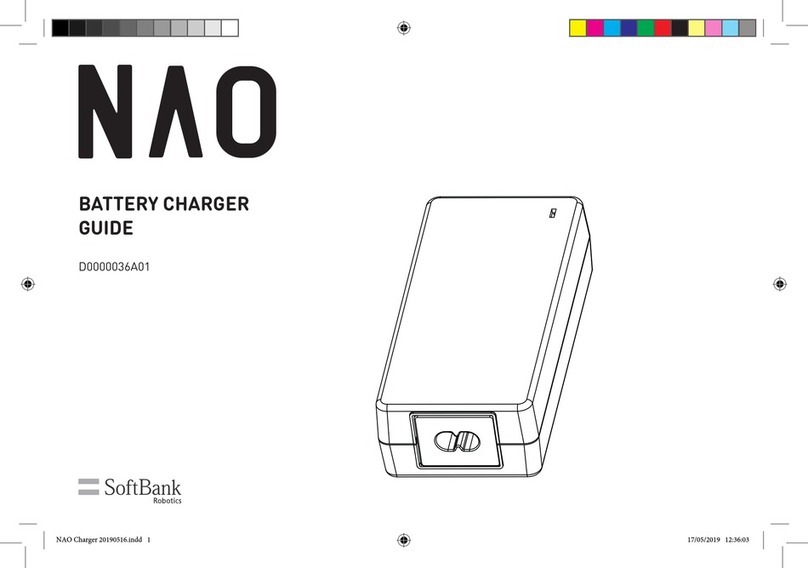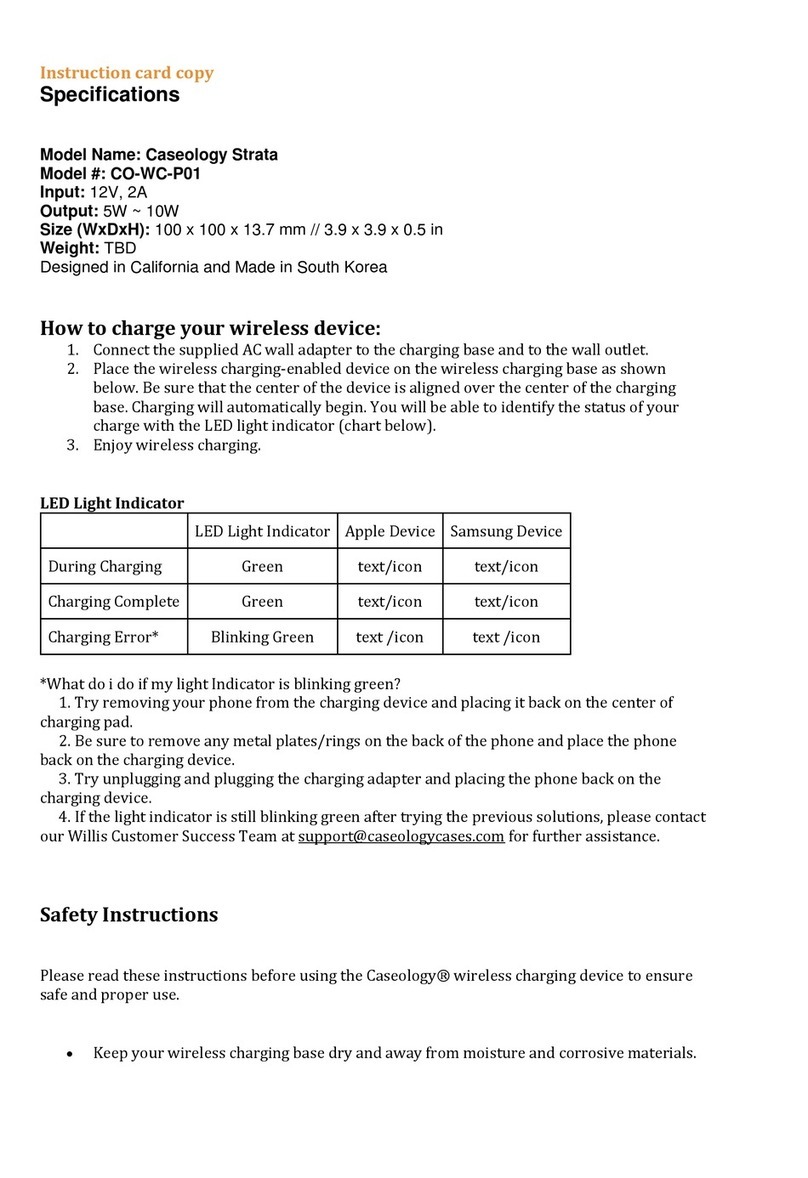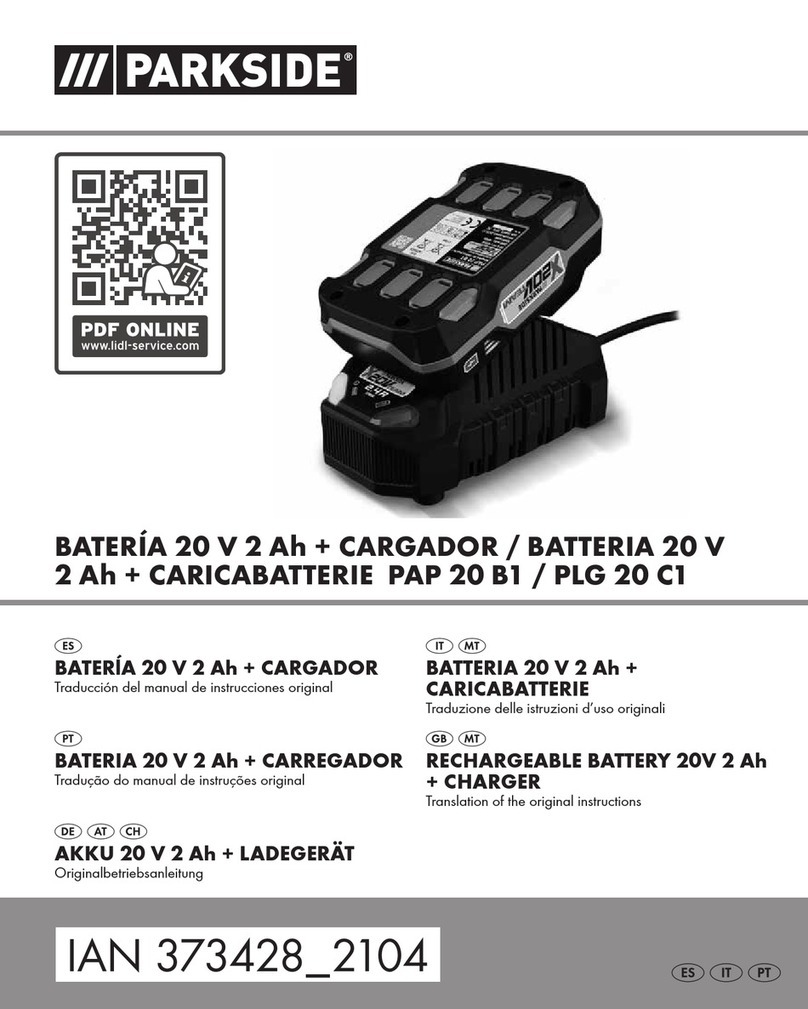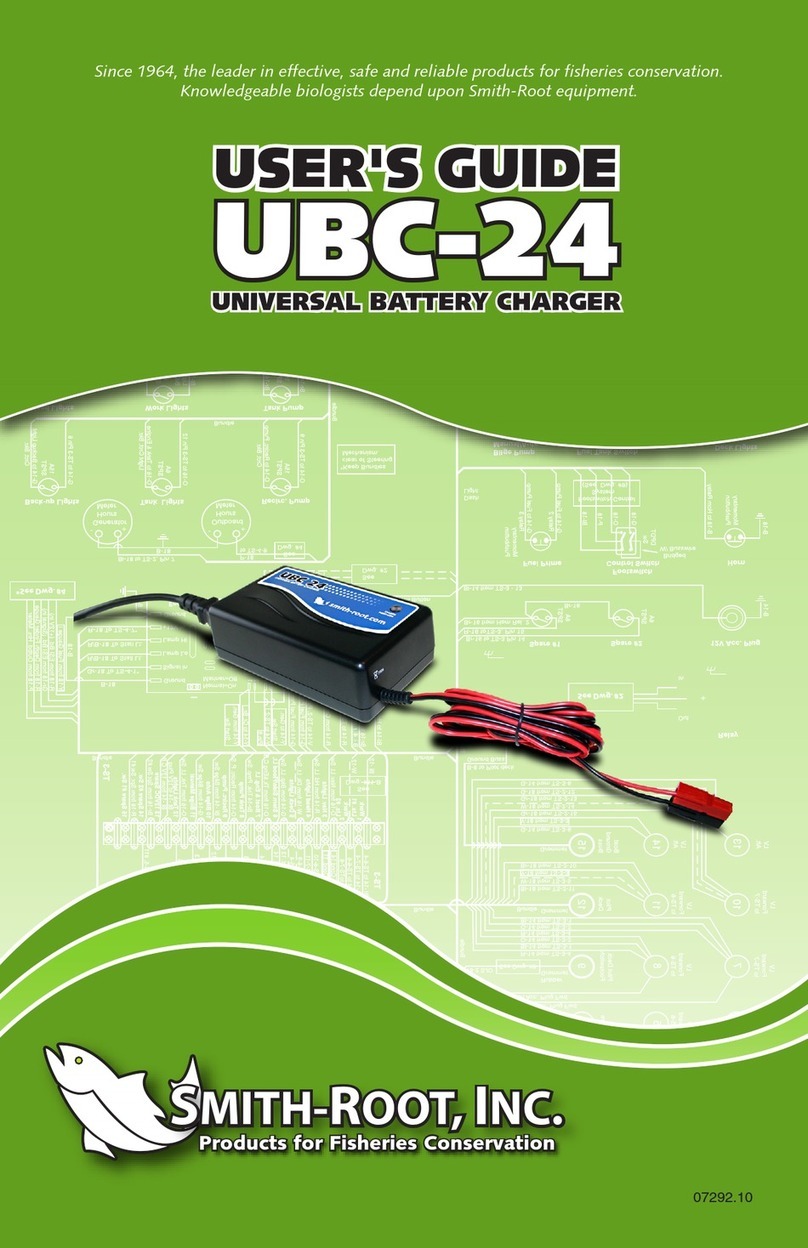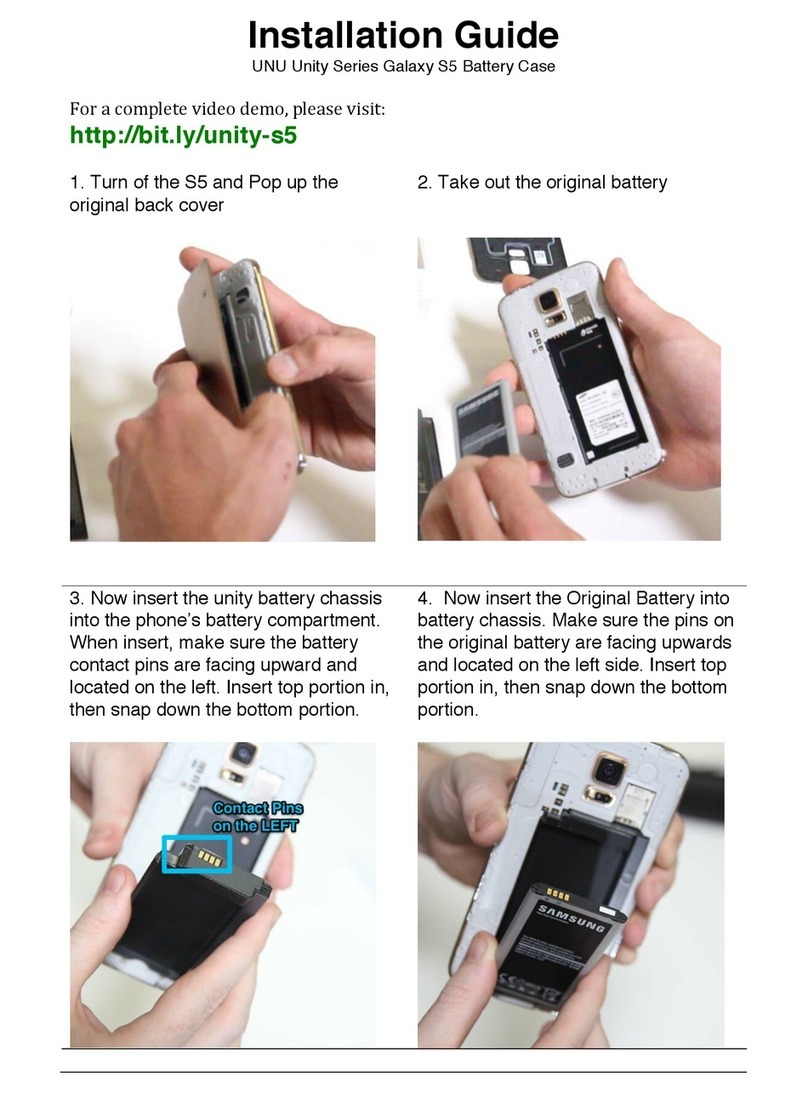Draper 33861 User manual

6V/12V
INTELLIGENT
CHARGER
33861
These instructions accompanying the product are the original instructions. This document is part of the product, keep
it for the life of the product passing it on to any subsequent holder of the product. Read all these instructions before
assembling, operating or maintaining this product.
This manual has been compiled by Draper Tools describing the purpose for which the product has been designed,
and contains all the necessary information to ensure its correct and safe use. By following all the general safety
instructions contained in this manual, it will ensure both product and operator safety, together with longer life of the
product itself.
All photographs and drawings in this manual are supplied by Draper Tools to help illustrate the operation of
the product.
Whilst every effort has been made to ensure the accuracy of information contained in this manual, the Draper Tools
policy of continuous improvement determines the right to make modifications without prior warning.

1.1 INTRODUCTION:
USER MANUAL FOR: 6V/12V Intelligent charger
Stock No: 33861
Part No: BCIB
1.2 REVISIONS:
Date first published June 2013.
Date of revision November 2021.
As our user manuals are continually updated, users should make
sure that they use the very latest version.
Downloads are available from: http://drapertools.com/manuals
Draper Tools Limited Draper Tools Limited
Hursley Road Oude Graaf 8
Chandler’s Ford 6002 NL
Eastleigh WEERT
Hampshire Netherlands
SO53 1YF
UK
Website: drapertools.com
Product Help Line: +44 (0) 23 8049 4344
General Fax: +44 (0) 23 8026 0784
1.3 UNDERSTANDING THIS MANUAL’S SAFETY CONTENT:
Warning! – Information that draws attention to the risk of injury or death.
Important – Information that draws attention to the risk of damage to the product or surroundings.
1.4 COPYRIGHT © NOTICE:
Copyright © Draper Tools Limited.
Permission is granted to reproduce this publication for personal and educational use only.
Commercial copying, redistribution, hiring or lending is prohibited.
No part of this publication may be stored in a retrieval system or transmitted in any other form or
means without written permission from Draper Tools Limited.
In all cases this copyright notice must remain intact.
1. TITLE PAGE
– 2 –

2. CONTENTS
– 3 –
2.1 TABLE OF CONTENTS
1 TITLE PAGE
1.1 INTRODUCTION ......................................................................................................... 2
1.2 REVISIONS ................................................................................................................. 2
1.3 UNDERSTANDING THIS MANUAL’S SAFETY CONTENT ........................................ 2
1.4 COPYRIGHT NOTICE ................................................................................................. 2
2 CONTENTS
2.1 CONTENTS ................................................................................................................. 3
3 WARRANTY
3.1 WARRANTY................................................................................................................. 4
4 INTRODUCTION
4.1 SCOPE ........................................................................................................................ 5
4.2 SPECIFICATION.......................................................................................................... 5
4.3 HANDLING AND STORAGE........................................................................................ 5
5 HEALTH & SAFETY INFORMATION
5.1 GENERAL SAFETY INSTRUCTIONS FOR BATTERY CHARGERS.......................... 6
5.2 CONNECTION TO THE POWER SUPPLY.................................................................. 6
6 TECHNICAL DESCRIPTION
6.1 IDENTIFICATION......................................................................................................... 7
6.2 MAIN COMPONENT DESCRIPTIONS........................................................................ 8
7 UNPACKING & CHECKING
7.1 PACKAGING ................................................................................................................ 9
8 PREPARING THE CHARGER
8.1 INSTALLATION .......................................................................................................... 10
9 SETTING THE CHARGER
9.1 SETTING THE CHARGER ........................................................................................ 11
10 CHARGING PROCESS
10.1 CHARGING PROCESS ............................................................................................. 12
11 MAINTENANCE
11.1 MAINTENANCE......................................................................................................... 13
12 EXPLANATION OF SYMBOLS
12.1 EXPLANATION OF SYMBOLS.................................................................................. 14
13 DISPOSAL
13.1 DISPOSAL ................................................................................................................. 15

3. WARRANTY
– 4 –
3.1 WARRANTY
Draper tools have been carefully tested and inspected before shipment and are guaranteed to be
free from defective materials and workmanship.
Should the tool develop a fault, please return the complete tool to your nearest distributor or
contact:
Draper Tools Limited, Chandler’s Ford, Eastleigh, Hampshire, SO53 1YF, England.
Telephone Sales Desk: +44 (0) 8049 4333 or Product Help Line +44 (0) 23 8049 4344.
A proof of purchase must be provided with the tool.
If upon inspection it is found that the fault occurring is due to defective materials or workmanship,
repairs will be carried out free of charge. This warranty period covering parts/labour is 12 months
from the date of purchase except where tools are hired out when the warranty period is 90 days
from the date of purchase. This warranty does not apply to any consumable parts, any type of
battery or normal wear and tear, nor does it cover any damage caused by misuse, careless or
unsafe handling, alterations, accidents, or repairs attempted or made by any personnel other than
the authorised Draper warranty repair agent.
Note: If the tool is found not to be within the terms of warranty, repairs and carriage charges will
be quoted and made accordingly.
This warranty applies in lieu of any other warranty expressed or implied and variations of its terms
are not authorised.
Your Draper warranty is not effective unless you can produce upon request a dated receipt or
invoice to verify your proof of purchase within the warranty period.
Please note that this warranty is an additional benefit and does not affect your statutory rights.
Draper Tools Limited.

4. INTRODUCTION
4.1 SCOPE
This intelligent battery charger is ideal for charging batteries of between 40-160Ah. It has a clear
intuitive control method for ease of use.
4.2 SPECIFICATION
Stock no.................................................................................................................................... 33861
Part no........................................................................................................................................ BCIB
Rated input ...................................................................................................................... 230V~50Hz
Output voltages ...................................................................................................................... 6V/12V
Output current @6V .......................................................................................................................8A
Output current @12V .....................................................................................................................8A
Suitable for batteries.......................................................................................................40Ah-160Ah
Weight ...........................................................................................................................................1kg
Charge control method..............................................................................Microprocessor controlled
Suitable for battery types......................................................................................Wet cell, AGM, Gel
Features ........................................................... High-frequency technology with multistage charging
........................................................................................................ Over charge protection
......................................................................................................... Short circuit protection
4.3 HANDLING AND STORAGE
This product should only be carried by its purpose-designed carry handle. Never carry the product
by its output leads or power supply cable, to do so could cause damage to the product that would
not be covered under warranty.
When the product is to be stored it should first be cleaned with a dry cloth. Then inspect the
product, looking for any wear or damage. If damage is found, have it rectified at your nearest
authorised Draper service centre. Once the product has been cleaned and checked for any
damage, it should be returned to its carton and stored in a clean and dry environment away from
dust and moisture.
– 5 –

5. HEALTH AND SAFETY INFORMATION
5.1 GENERAL SAFETY INSTRUCTIONS FOR BATTERY CHARGERS
WARNING! Explosive gases. When a battery is charged it can produce hydrogen gas, which is
explosive. Charging should be carried out in a well-ventilated area and away from sources of heat,
flames and sparks.
Indoor use only. This charger must not be used outside in rain or snow conditions.
Disconnect the mains cable. Before making or breaking the connection to the battery terminals,
remove the plug from the power supply.
Connect the charger carefully. Make sure the red clamp is attached to the battery positive
terminal. The black clamp attaches to the negative. Do not reverse the clamps or allow them to
touch each other.
Refer to the vehicle manufacturer’s information. Follow these instructions fully to make sure no
damage occurs to the vehicle or its equipment.
Do not cover the charger. Allow air to circulate around the charger to prevent over heating. The
charger is equipped with a time-lag fuse inside. Overheating will trip the fuse to prevent damage
and will not reset until sufficiently cooled.
Do not use the charger within the vehicle. Stand it on a firm, level surface to prevent damage to
the charger or vehicle.
Do not tamper with this product. Repairs and maintenance must be carried out by an authorised
service agent. Only use genuine Draper spare parts. Do not modify this product in any way.
Wear approved safety goggles (not safety glasses) and latex/nitrile gloves. Before charging a
maintenance-type battery, the electrolyte (battery acid) must be filled to the maximum marked
levels. Never use tap water. Distilled water or electrolyte must be used.
Never attempt to charge non-rechargeable batteries. Only charge lead-acid batteries within the
voltage and amp-hour capacities of the charger.
Never attempt to charge a frozen battery.
Never attempt to charge a damaged or distorted battery.
Keep out of the reach of children.
Wear personal protective equipment (PPE). Batteries can contain hazardous materials so it is
important to ensure that adequate hand and eye protection is worn when charging batteries.
5.2 CONNECTION TO THE POWER SUPPLY
Make sure the power supply information on the machine’s rating plate is compatible with the power
supply you intend to connect it to.
This charger comes supplied with a UK standard three-pin plug fitted. It is designed for connection
to a domestic power supply rated at 230V AC.
Because it is constructed mostly of plastic parts, it is a Class 2 machine, meaning it is double
insulated and does not require an earth connection in the power supply.
Apart from replacing the fuse in the plug, no other electrical work is recommended.
– 6 –

6. TECHNICAL DESCRIPTION
– 7 –
6.1 IDENTIFICATION
(9)
(2)
(3)
(1)
(4) (5) (6)
(1) Charge status LEDs.
(2) Indicator LEDs.
(3) 6V/12V selection button.
(4) Battery selection button.
(5) Charge rate selection button.
(6) Start charging button.
(7) Battery connection terminals.
(8) Power supply lead with plug.
(9) Carry handle.
(7)
(8)

6. TECHNICAL DESCRIPTION
– 8 –
6.2 MAIN COMPONENT DESCRIPTIONS
1. These will illuminate to display the current charge fill capacity of the connected battery.
2. These will illuminate to indicate that the charger is receiving mains power, is actively charging a
battery, the battery is full or that there is a fault.
3. This button is used to select either 6V or 12V charging output voltage. The selection must
match the voltage of the battery to be charged.
4. Used to select battery type to be charged.
5. Used to select slow or fast charge rate.
6. Press to start charging after the correct settings are input.
7. Used to connect the charger to the battery.
8. Supplies mains voltage to the charger when plugged into domestic 230V AC socket.
9. Handy carry handle. Always carry the charger by this handle and never by the leads.

7. UNPACKING AND CHECKING
– 9 –
7.1 PACKAGING
Carefully remove the charger from the packaging and examine it for any sign of damage that may
have happened during shipping. Lay the contents out and check them against the parts shown in
section 6.1. If any part is damaged or missing, please contact the Draper Helpline (the telephone
number appears on the Title page) and do not attempt to use the charger.
Retain the packaging material during the guarantee period in case the machine needs to be
returned for repair.
Warning! Some of the packaging materials used may be harmful to children. Do not leave any of
these materials in the reach of children.
If any of the packaging is to be thrown away, make sure it is disposed of correctly, according to
local regulations.

8. PREPARING THE CHARGER
8.1 INSTALLATION
1. When selecting a suitable location to use this charger, be sure to choose a clean, dry and
tidy location.
2. Ensure that the charger can be placed in a stable position and that there is ample room next to
the charger for the battery.
3. Ensure that the charger is in good working condition before each use. Any damage or defects
should be rectified immediately. The charger should not be used if there is any damage to the
charger or its cables.
4. Once you have carried out the inspection listed above and are sure that the charger is in good
condition and safe to use, connect the battery connection clamps to the battery’s terminals.
Ensure that the correct polarity is observed (Red+ Black-).
5. Plug in the charger to the mains power supply. You are now ready to set up the charger for
your chosen battery.
– 10 –

9. SETTING THE CHARGER
9.1 SETTING THE CHARGER
To set up the charger to charge your battery, you will need to follow the simple process
detailed below:
STEP 1. Once the charger is connected correctly to your battery and plugged into the mains
supply, press the button marked “STEP 1” to select the correct output voltage for your
battery.
STEP 2. Press the button marked “STEP 2” to cycle through the battery types and select the one
you wish to charge.
STEP 3. Press the button marked “STEP 3” to select either fast charge or slow charge.
The effects of the fast or slow charge settings are detailed in the table below:
12V battery type Slow charge Fast charge
GEL 2A for 5-40Ah batteries 4A for 10-80Ah batteries
AGM 2A for 5-40Ah batteries 8A for 25-160Ah batteries
WET 2A for 5-40Ah batteries 8A for 25-160Ah batteries
GO. Press the “GO” button to start the charging process.
During the charging process, the charge status LEDs will illuminate as the charge progresses.
All charge status lights will be fully lit, followed by the “full” indicator LED, once the battery is fully
charged.
– 11 –

– 12 –
10. CHARGING PROCESS
10.1 CHARGING PROCESS
The charging process is controlled by a microprocessor.
Stage 1: Bulk charge
Initially, the charger will apply the bulk charge process to the battery. When the digital sensors
detect that the battery’s voltage has reached a maximum safe predetermined level, the
microprocessor will automatically move into the second stage of the charging process.
Stage 2: Absorption charge
This maintains the charge at a constant, safe voltage. During this stage of the charging process,
the charging voltage remains constant while the charging current is controlled by the
microprocessor to allow for the maximum internal chemical energy transfer to take place.
Stage 3: Top off/float charge
During this process, the charging voltage is automatically maintained to a predetermined level
while the charging current is monitored and adjusted by the microprocessor for a safe and
effective 100% charge.

– 13 –
11. MAINTENANCE
11.1 MAINTENANCE
With only minimal maintenance, this charger will deliver years of dependable service.
Follow these simple steps to maintain the charger in an optimum condition:
• After each use, clean the battery charger clamps. Be sure to remove any battery fluid if
present that will cause corrosion of the battery terminal clamps.
• Clean the outside of the charger with a soft cloth.
• Keep the charger leads loosely coiled during storage to prevent damage to the leads. Do not
use the charger if the leads or clamps have been damaged in any way.

12. EXPLANATION OF SYMBOLS
– 14 –
12.1 EXPLANATION OF SYMBOLS
WEEE –
Waste Electrical & Electronic Equipment.
Do not dispose of Waste Electrical & Electronic
Equipment in with domestic rubbish.
For indoor use only.
Read the instruction manual.
+Positive.
–
Negative.

13. DISPOSAL
13.1 DISPOSAL
– At the end of the machine’s working life, or when it can no longer be repaired, ensure that it is
disposed of according to national regulations.
– Contact your local authority for details of collection schemes in your area.
In all circumstances:
• Do not dispose of power tools with domestic waste.
• Do not incinerate.
• Do not dispose of WEEE* as unsorted municipal waste.
* Waste Electrical & Electronic Equipment.
– 15 –

YOUR DRAPER STOCKIST
RDPR1121
©Published by Draper Tools Limited.
No part of this publication may be reproduced, stored in a retrieval system or transmitted in any form or by any means,
electronic, mechanical photocopying, recording or otherwise without prior permission in writing from Draper Tools Ltd.
CONTACTS
Draper Tools Limited
UK: Hursley Road, Chandler’s Ford, Eastleigh,
Hampshire. SO53 1YF. U.K.
EU: Oude Graaf 8
6002 NL Weert (NL)
Help Line: (023) 8049 4344
Sales Desk: (023) 8049 4333
Internet: drapertools.com
E-mail: [email protected]
General Enquiries: (023) 8026 6355
Service/Warranty Repair Agent:
For aftersales servicing or warranty repairs, please contact the
Draper Tools Help Line for details of an agent in your local area.
This manual suits for next models
1
Table of contents
Other Draper Batteries Charger manuals
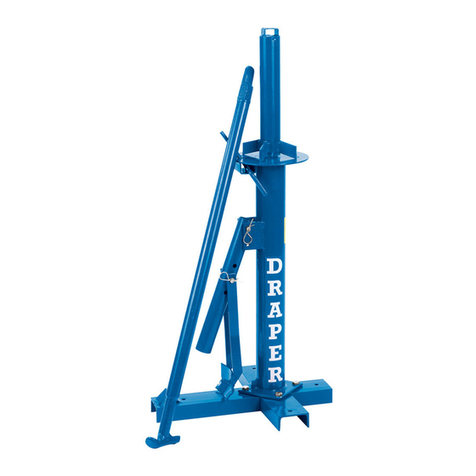
Draper
Draper MTC100 User manual
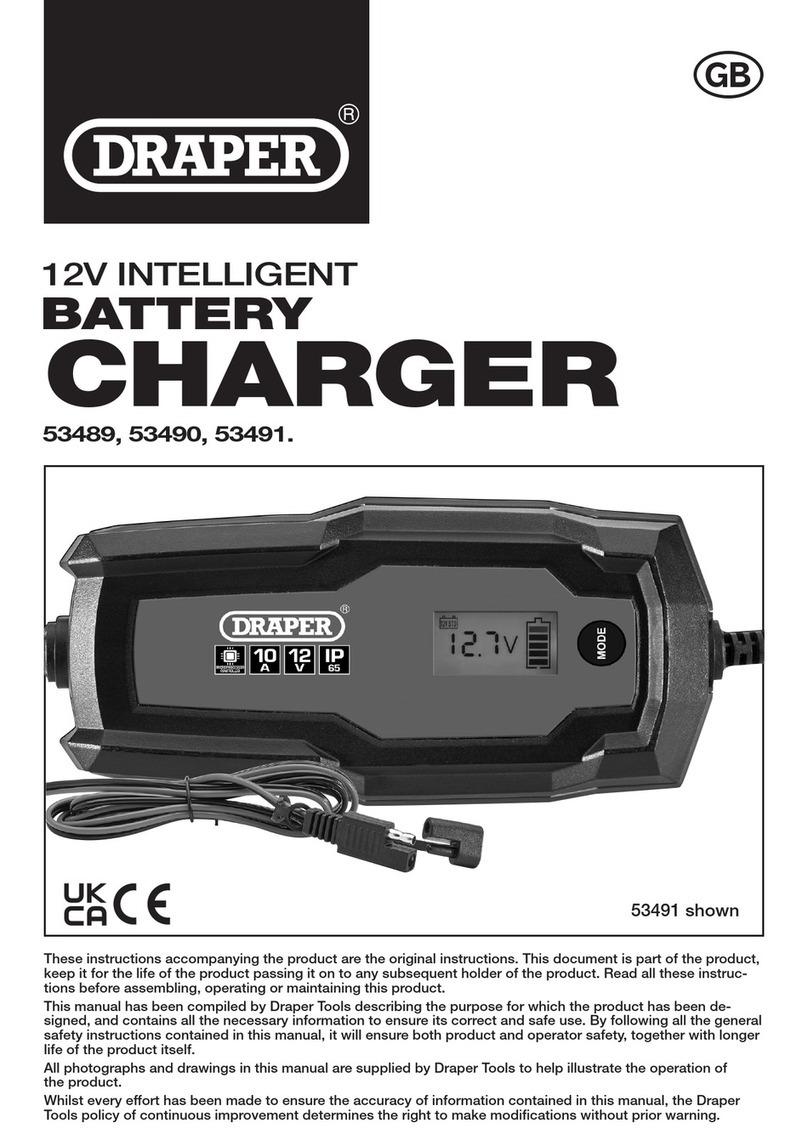
Draper
Draper 53489 User manual
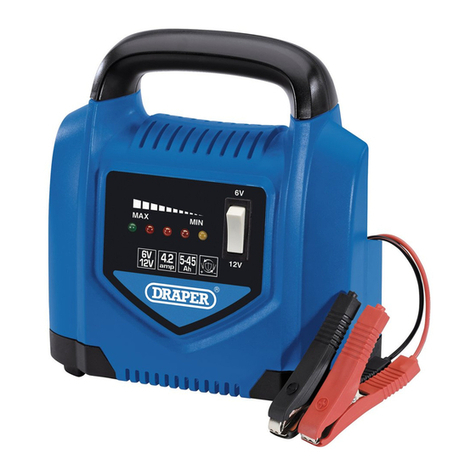
Draper
Draper 70544 User manual
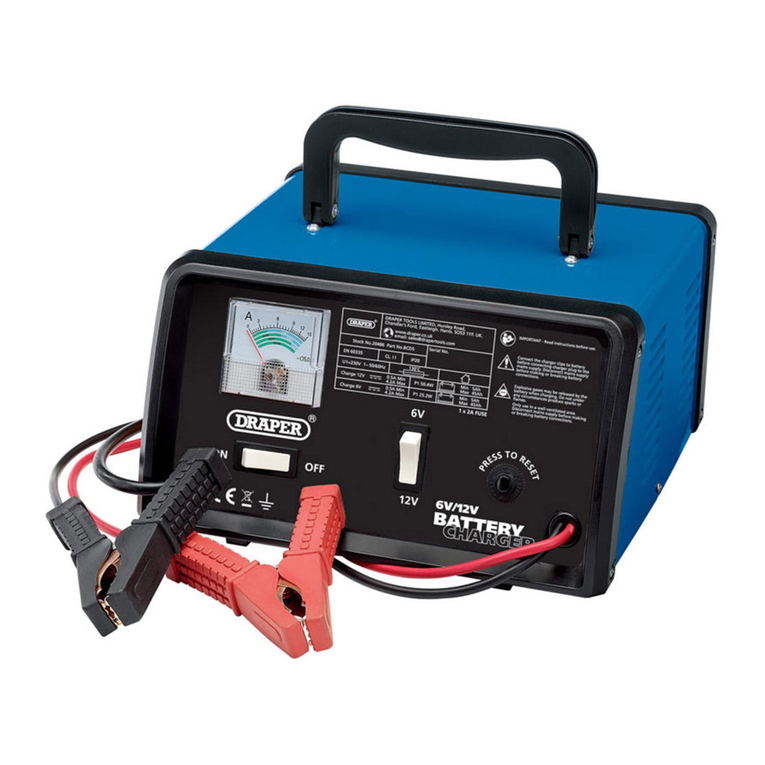
Draper
Draper BCD5 User manual
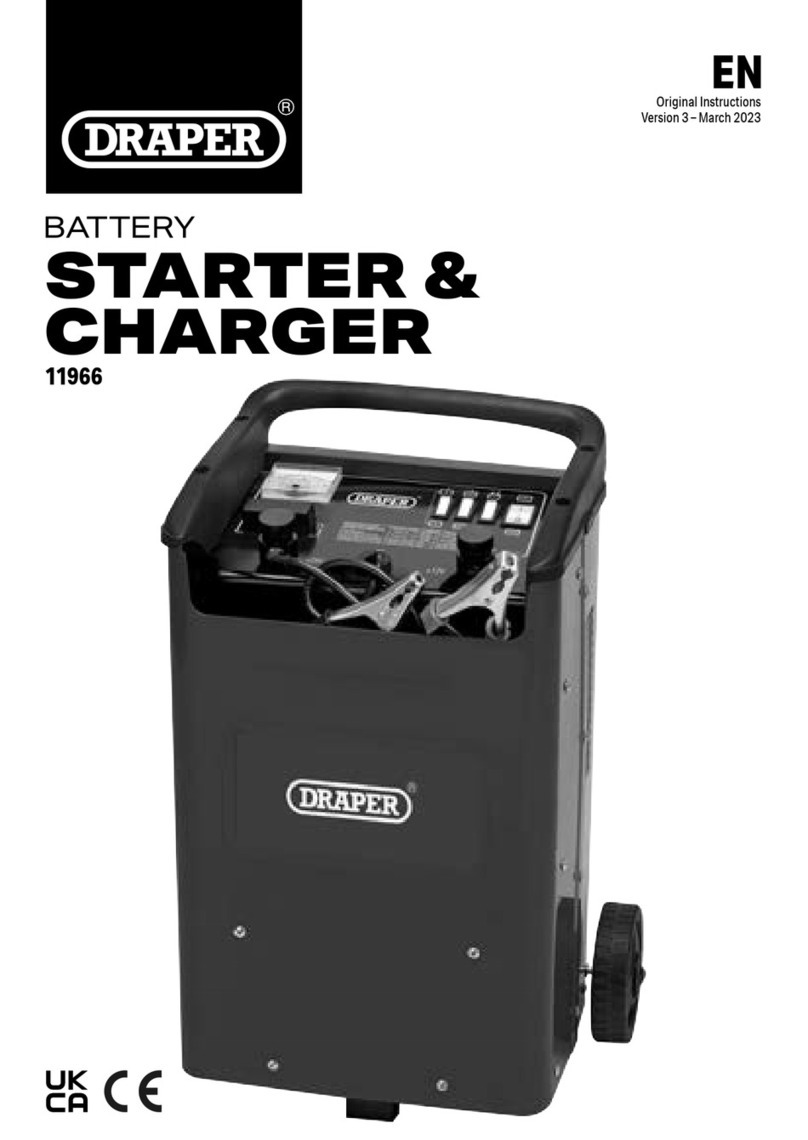
Draper
Draper BCSD300T User manual

Draper
Draper 66800 User manual
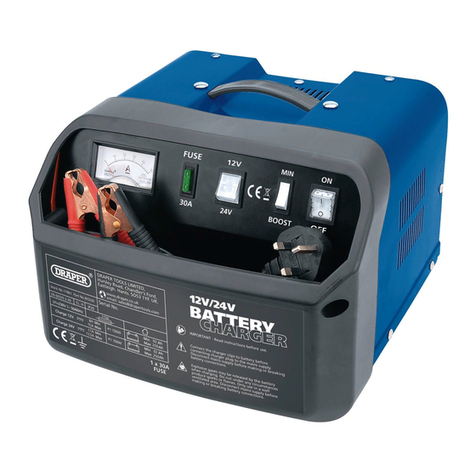
Draper
Draper BCD12 User manual
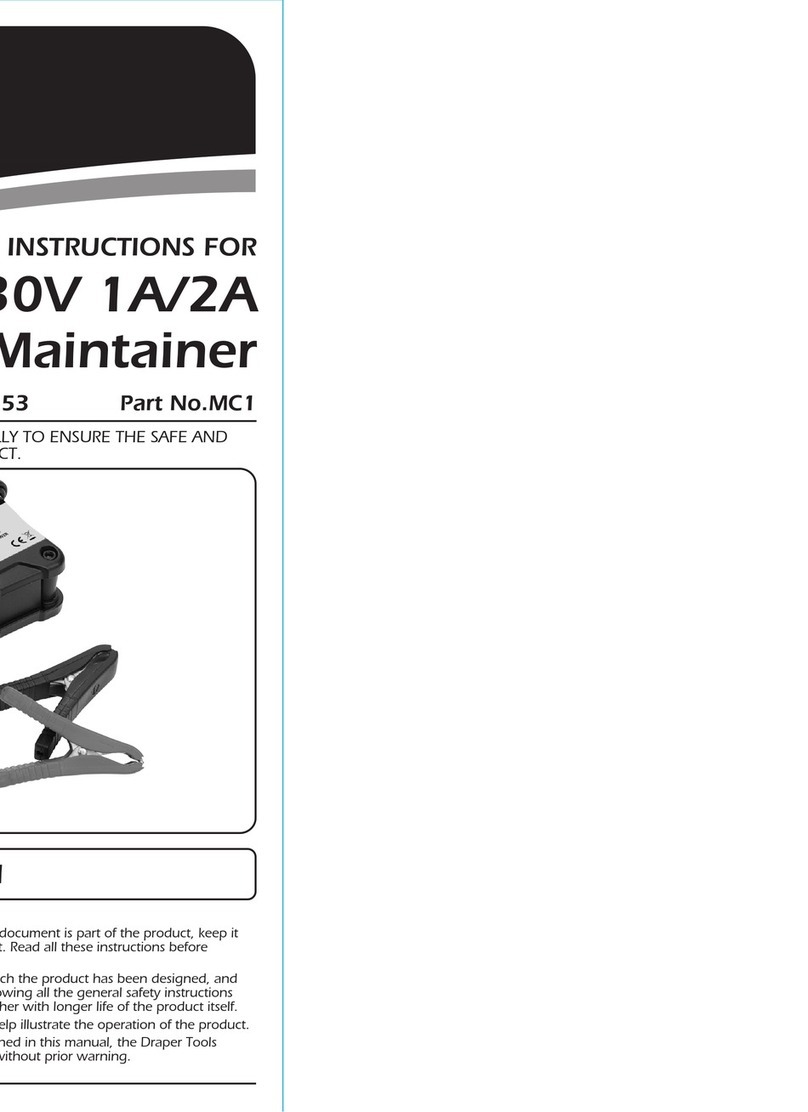
Draper
Draper MC1 User manual
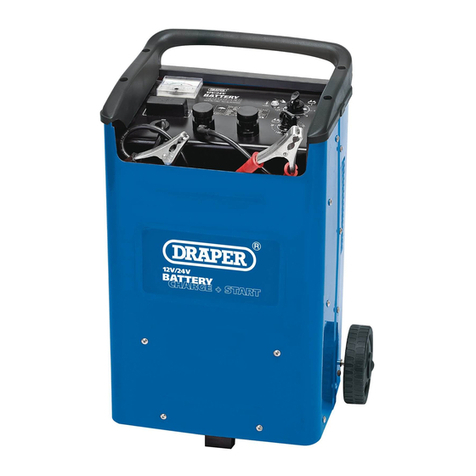
Draper
Draper BCSD300T User manual
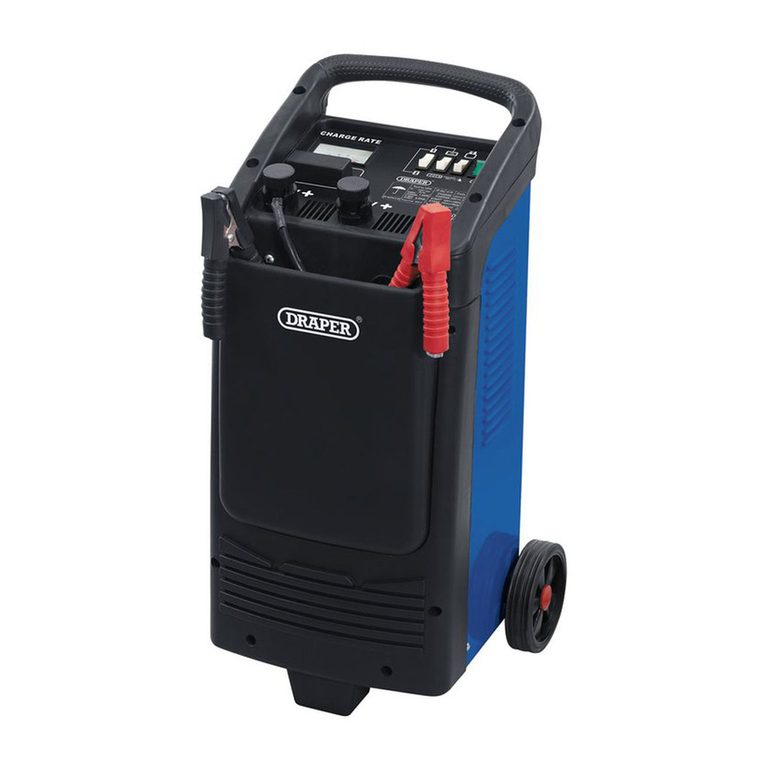
Draper
Draper 70549 User manual
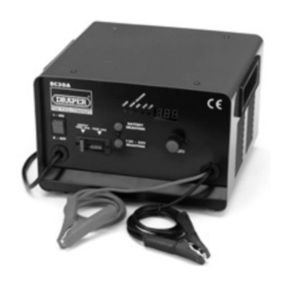
Draper
Draper BC30A User manual
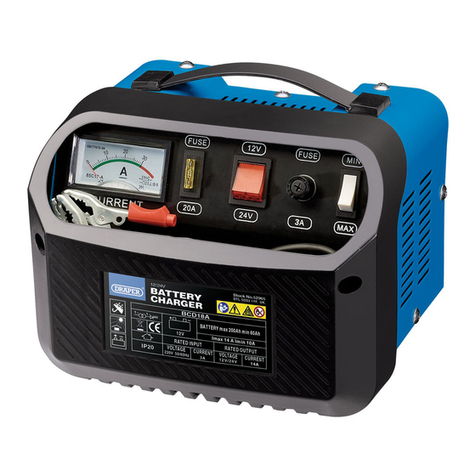
Draper
Draper BCD18A User manual
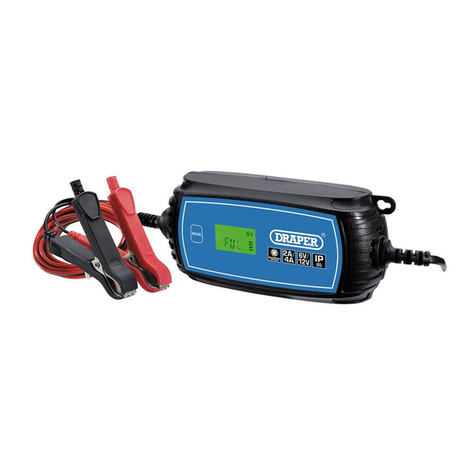
Draper
Draper BCI5 User manual

Draper
Draper BCD11 User manual

Draper
Draper BCD5 User manual
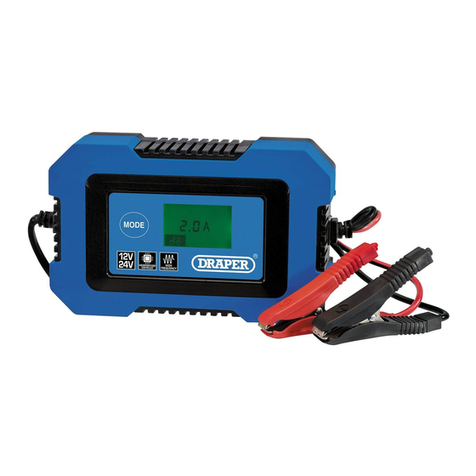
Draper
Draper BCHF10 User manual
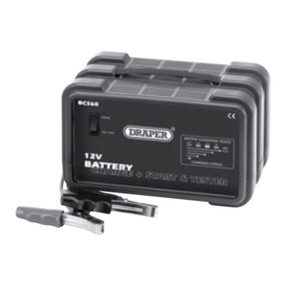
Draper
Draper BCS60 User manual
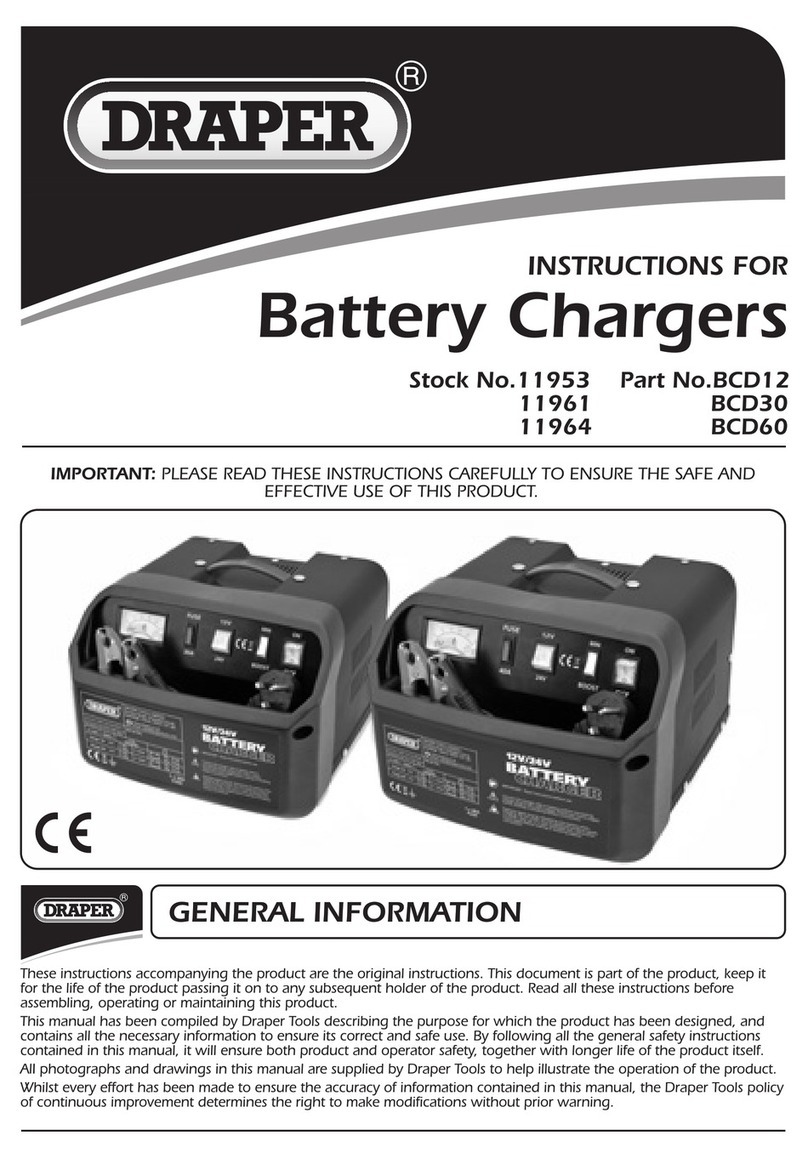
Draper
Draper BCD12 User manual
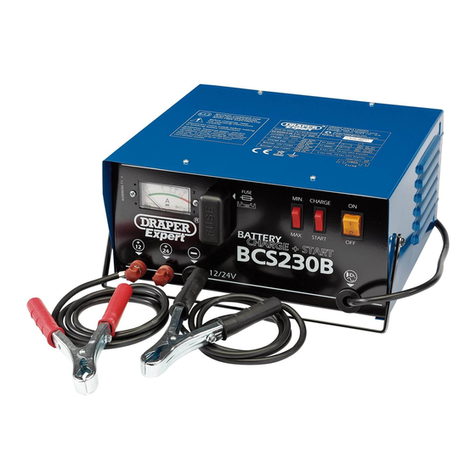
Draper
Draper BCS230B Firmware update
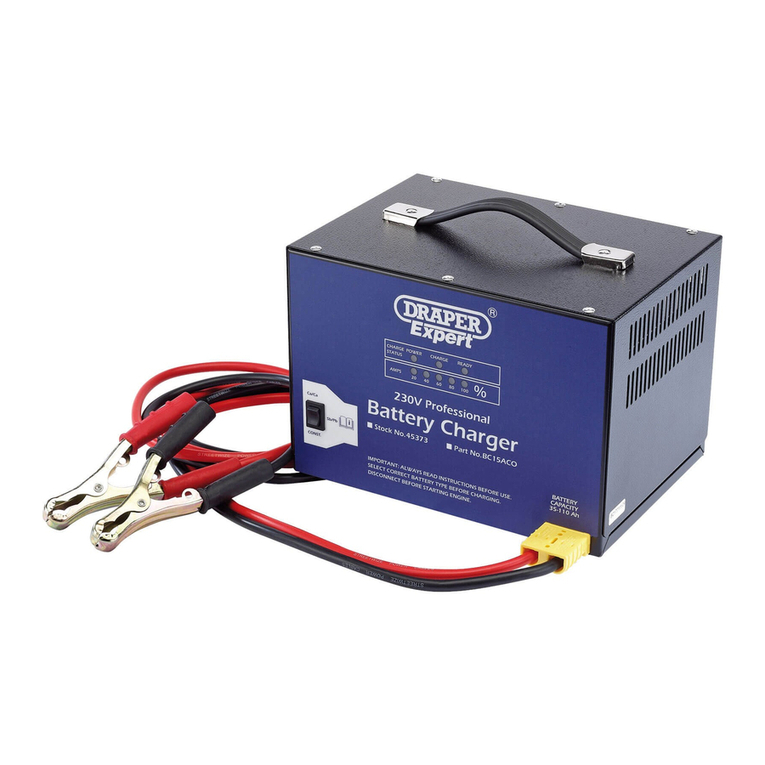
Draper
Draper BC15ACO User manual

